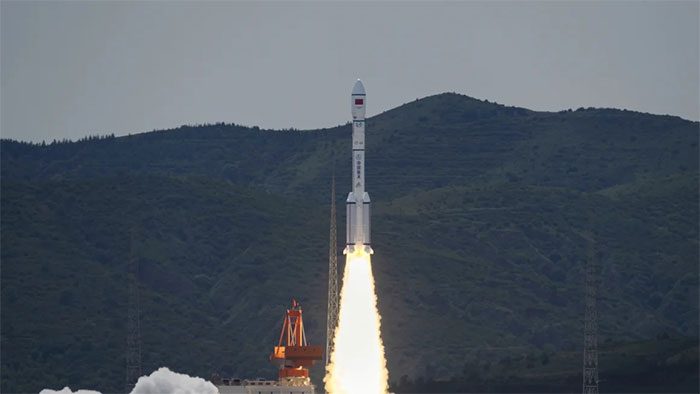According to various space debris monitoring organizations, one of China’s Long March 6A rockets has disintegrated in low Earth orbit, creating a cloud of debris consisting of hundreds of fragments.
The Long March 6A rocket was launched from the Taiyuan Satellite Launch Center last Tuesday to place 18 G60 satellites into orbit, marking the first deployment for the Thousand Sails constellation by Shanghai Spacecom.
This massive satellite constellation, once completed, will consist of 1,296 satellites, with plans to expand its capacity to around 14,000 to compete with SpaceX’s Starlink satellites.

The Long March 6A rocket carrying 18 satellites lifted off on Tuesday from China’s Taiyuan Satellite Launch Center. (Photo: AP).
The U.S. Space Command is continuing to track the debris and provide information to NASA. Rob Margetta, a public relations officer at NASA headquarters, stated: “No direct threat to the International Space Station has been observed due to this incident.”
The amount of debris being monitored fluctuated throughout Thursday, starting with over 50 fragments tracked by the Global Sensor Network of Slingshot Aerospace. Later, U.S. Space Command reported that they were monitoring over 300 fragments.
Currently, radar data from the monitoring organization LeoLabs has confirmed that this event has generated at least 700 fragments, potentially increasing to over 900 fragments.
According to Slingshot, it is believed that the rocket exploded at an altitude of 810 km above the Earth’s surface, and the debris poses a “significant hazard to low Earth orbit satellites” at altitudes below 800 km. In comparison, the International Space Station orbits the Earth at an altitude of approximately 408 km.
The actual risks of the debris cloud will not be known until experts have the opportunity to conduct a thorough analysis, which may take another day or two. The reason for the rocket’s disintegration is still unknown.
Another Long March 6A rocket body exploded in a densely populated low Earth orbit area on November 12, 2022, scattering over 500 explosive fragments across a range from 320 to 1,500 km, increasing the risk of collisions with satellites.
According to LeoLabs, there are currently nearly 1,000 derelict rocket bodies in low Earth orbit, and this number continues to rise due to increased launch activities as more countries focus on their space ambitions.


















































